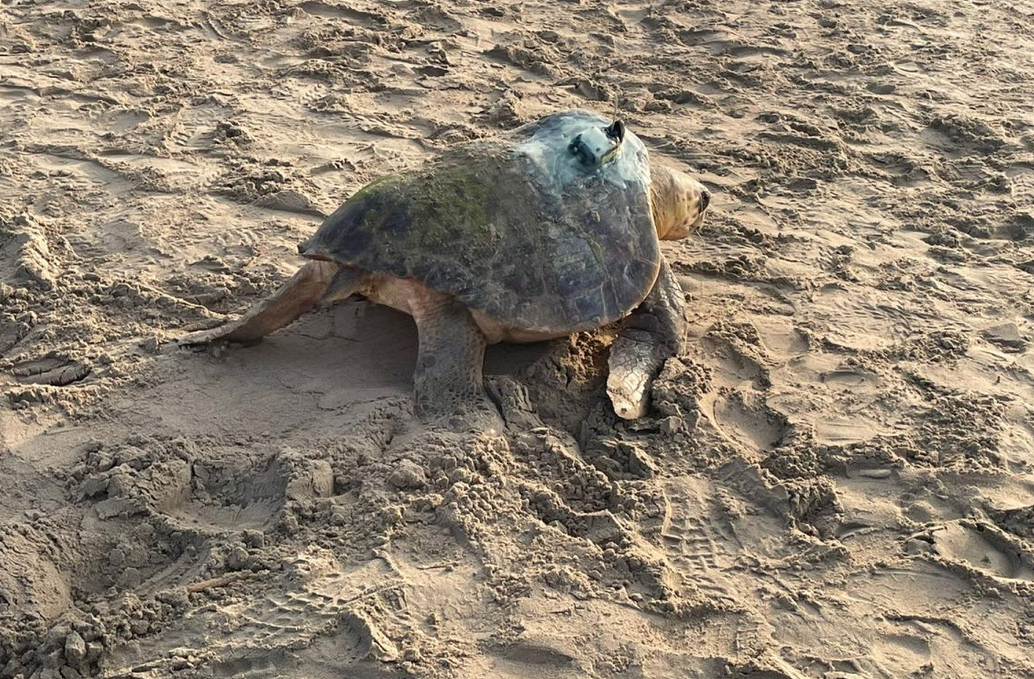The colonization of sea turtles on the coasts of the Spanish Mediterranean continues
The results of the InGeNI-Caretta project, financed by the Biodiversity Foundation and with the participation of teams from the Faculty of Biology and the Institute of Biodiversity of the University of Barcelona (IRBio) indicates that the colonization process of this species of sea turtle on our shores is consolidating.
- The 2024 season has already begun, with at least six female turtles visiting the beaches of the Valencian Community, Catalonia, Murcia, Andalusia and the Balearic Islands
- So far there are two protected nests in the Valencian Community and one in Catalonia
- The increase in the surface temperature of the water of the Mediterranean Sea and the sand of its beaches due to climate change contributes to making this phenomenon repeat itself year after year with an apparently increasing trend
Barcelona, 18 July 2024. In the last decade, the beaches of the Spanish coast and the rest of the western Mediterranean are experiencing an increase in the detection of loggerhead turtle nests (Caretta caretta). The increase in the number of nests in these areas is because sea turtles are starting to colonize new areas, as a result of climate change. This colonization is of great importance to the species, as forecasts indicate that in the areas where they used to nest, climate change could prevent the birth of males and reduce the survival of young.
The nesting season spans from the beginning of June to the end of August, and we can find the birth of newborns until October. Despite increased monitoring by volunteers, and awareness and training campaigns, detected nesting has so far been scattered. Although we are starting to see a concentration of this type of event in some areas of the coast Some nests are detected when the turtles have already hatched, suggesting that the actual number of nests may be higher.
In addition, this emerging colonization occurs in spaces with a high human occupation, such as the Spanish coast, so adequate management is needed to promote the success of these spawns in an unnatural environment. Citizen ignorance of the phenomenon, the lack of scientific information about the factors that regulate it, the alteration of the conditions of the beaches due to their recreational use. The lack of knowledge about the effectiveness of the management measures. Nests and hatchlings by beach managers can compromise nest hatching success and hatchling survival.
Faced with this reality, it is necessary to increase the vigilance of the beaches and the collaboration with the local, regional and national authorities. To protect the nests and make the high tourist activity compatible with the conservation of sea turtles in the summer months. Citizen involvement is also essential for the detection of females that come to the beaches to make their nests, the location of their tracks to find the eggs, and the finding of young or their tracks. It is important that the public is aware of these events for the conservation of sea turtles in our environment. The increasing trend observed and the presence of females nesting in different years suggests that sea turtle nesting on the Spanish Mediterranean coasts has entered a new stage. Migrants from distant populations can coexist with some individuals already resident on our coasts.
Start of the InGeNi-Caretta project
This multidisciplinary and collaborative project began in May 2023 thanks to funding from the Biodiversity Foundation. InGeNi-Caretta is a consortium formed by the BETA Technology Center of the University of Vic-Central University of Catalonia (UVic-UCC), the Biodiversity Research Institute (IRBio)-University of Barcelona, the Polytechnic University of Valencia with the collaboration of the University of Valencia. It also includes the Biological Station of Doñana. The objectives of the project are the detection and study of nests on the beaches of the Spanish coast. The evaluation of the quality of beaches through the study of temperatures, monitoring by telemetry, genetic analyses, and monitoring of stable isotopes of females and newborns (to identify their origin). The project also includes as objectives to study and evaluate management actions in order to refine the action protocols.
The research team is made up of sea turtle specialists, who generate the scientific knowledge necessary to understand this unique colonization phenomenon in the world. They also transmit it to the authorities to facilitate decision-making in the planning and management of the Spanish coast. The InGeNi-Caretta results set provides relevant scientific information to improve nesting.
Source: UVic Press
